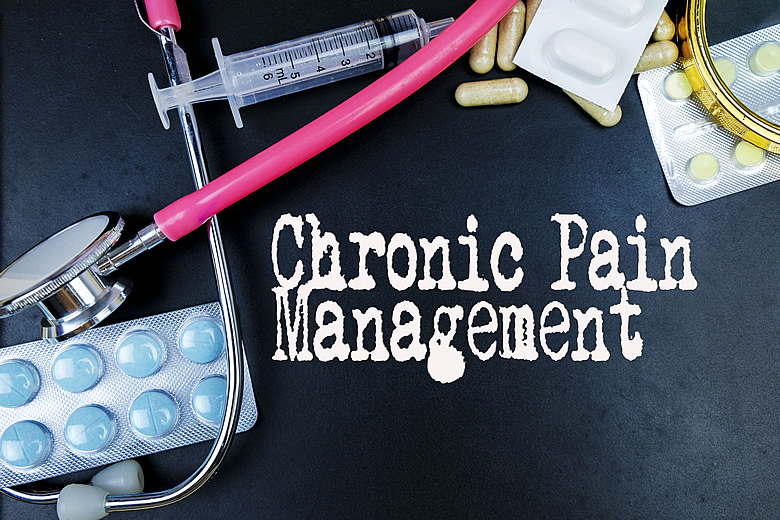Could Missing Nutrients Be Fueling Your Chronic Pain?

Chronic pain is more than just an ache that won’t go away. By definition, it lasts for more than three months and often makes it hard to get through daily life. Beyond the discomfort itself, chronic pain can set off a chain reaction—triggering inflammation in the brain (called microglial activation), poor sleep, low mood, and sometimes even frustrating interactions with doctors who gaslight you instead of taking your pain seriously.
But here's something important to remember: pain is your body's "check engine" light. It's a signal that something needs attention, not just something to be numbed or ignored.
How Nutrition Shapes the Way We Feel Pain
We often think of pain management in terms of pills or procedures. But nutrition plays a surprisingly powerful role in how our body creates, processes, and calms pain. In fact, I've seen people get lasting relief even after years of chronic pain by simply adding the right high-potency multivitamin to their daily routine.
New Research continues to confirm that people living with chronic pain often have low levels of key nutrients. My own research with the S.H.I.N.E.® Protocol has shown that correcting these imbalances can make a dramatic difference.
While pain itself can worsen nutrient loss, the bigger issue is usually the other way around: nutrient deficiencies amplify pain. Four common pain pathways are closely tied to nutrition:
- Muscle pain and tightness. Low energy in the body, often linked to too few B vitamins and magnesium, makes muscles shorten and ache.
- Nerve pain. Even if blood tests look "normal," hidden deficiencies in vitamin B12 and magnesium can drive ongoing nerve pain.
- Inflammation. Too little vitamin C, vitamin D, and omega-3s (from fish oils) can worsen inflammation.
- Brain pain. Nearly all chronic pain stirs up inflammation in the brain. A natural compound called PEA (Palmitoylethanolamide) has been shown to calm this inflammation and ease many kinds of pain.
The challenge? The Standard American Diet has lost roughly half its nutrient content due to food processing. That means it's nearly impossible to get everything your body needs from diet alone. This is why I recommend a daily high-potency multivitamin, especially for anyone living with chronic pain.
And what about testing? Unfortunately, individual nutrient tests are often costly, unreliable, and not very helpful for patients (though they can be useful in large research studies). A more practical approach is to assume that deficiencies are present, start supplementation, and see if symptoms improve.
Three Key Supplements That Can Make a Difference
If nutrient deficiencies are playing a role in your pain, the right supplements may start easing your discomfort within a few weeks (though sometimes it can take several months). Taken together, the three supplements below can be powerful allies in helping your body regain its natural balance and resilience against pain.:
1. High-Potency Multivitamin
Look for one with at least:
- 25 mg of most B vitamins (but no more than 45 mg of B6, and make sure it’s in the P5P form).
- 250 µg of vitamin B12.
- 150 mg of magnesium.
- 1,000 IU of vitamin D.
- 250 mg of vitamin C.
The Energy Revitalization Drink Mix will cover all of these in one formula.
2. PEA
PEA helps calm nervous-system inflammation and can ease many types of chronic pain. PEA Healthy Inflammation Response is a great choice for this as it's a high-absorption form of PEA.
- Take: 300 mg twice daily.
- For stronger effect, take 1,200 mg daily for 1 month, then 2,400 mg daily for 2 months. This will show the full effects. After that, you can lower the dose as feels best for you.
3. Calm Inflammation, Naturally
A simple way to help your body dial down inflammation is to use a blend of four well-studied ingredients:
- High-absorption curcumin (from turmeric), to help quiet inflammatory signals.
- Boswellia, a tree resin that may ease joint stiffness and everyday aches.
- DLPA (DL-phenylalanine), an amino acid that can support your body's own pain-relieving endorphins, so discomfort feels less intense.
- Nattokinase, an enzyme from fermented soy (natto) that supports healthy circulation, which can indirectly help with pain and swelling.
You can find these together in combination in a product called Curamin®. This supplement can give you superior results over others as it is formulated for high-absorption.
What to expect? Some people notice benefits quickly, but it typically takes about six weeks of daily use to feel the full effect. So consistency matters.
Can I use this with pain medicines? In my clinical practice, I often used these safely alongside standard pain medications.
Other Helpful Tools for Pain Relief
Prioritize sleep, as poor sleep magnifies pain.For localized pain, look for structural issues such as posture, muscle imbalances, or injuries.
My book From Fatigued to Fantastic outlines practical strategies for different types of pain.
My free smartphone app Cures A-Z offers guidance on nutrients and natural remedies for pain and overall wellness.
Bottom Line
Chronic pain is not all in your head. Your body may simply be running low on the nutrients it needs. By replenishing key vitamins, minerals, and natural compounds like PEA, you can help turn down the volume on pain—and turn back up the volume on living.

Jacob Teitelbaum, M.D. is one of the most frequently quoted post viral CFS, fibromyalgia, energy, sleep and pain medical authorities in the world. He is the author of 12 books including You Can Heal from Long Covid, the best-selling From Fatigued to Fantastic!, Pain Free 1-2-3, The Complete Guide to Beating Sugar Addiction, Real Cause Real Cure, The Fatigue and Fibromyalgia Solution, and the popular free Smart Phone app Cures A-Z. He is the lead author of eight research studies and three medical textbook chapters on effective treatment for fibromyalgia and chronic fatigue syndrome. Dr. Teitelbaum appears often as a guest on news and talk shows nationwide, including past appearances on Good Morning America, The Dr. Oz Show, Oprah & Friends, CNN, and FoxNewsHealth.
Websites: Vitality101.com | EndFatigue.com
Facebook Support Group: Recovering from Fibromyalgia, Chronic Fatigue, and Long COVID
Facebook Page | Instagram
